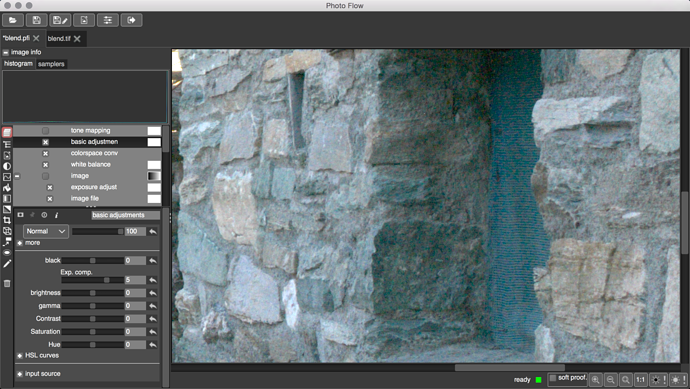You have restated what I outlined.
With that said, the ratios of data in your file do not reflect the ratios as they would appear in a scene referred file.
Did you apply your stop adjustments on the scene referred original linear data, or somewhere else in your stack?
To solve this problem, please post exactly two of the widest brackets, in linear with REC.709 primaries. That is, off of your raw data, dcraw -T -4.
This conflates a creative question with a technical code value need. Within any given encoding, some code value will correspond with a middle grey value. This isn’t about creative choices, this is about anchoring energy relative to a single encoded capture.
EDIT: I see you have put your raw files in the download. Will try to take a look when I get a chance.
EDIT#2: I did a very, very, very hasty silly merge based off of the exif data in the two most extreme images, so you’ll see a seam! It seems they were both shot at the same aperture, with a spread of +4 EV between 7869 and 7872 via shutters of 1/8th and 1/120th respectively. I took the spread of values and merged them between the shadowy foreground and the hot background.
Here is a hasty render with a generic looking view, with no creative tweaking other than the basic view itself:
Here is a closeup of one of higher values from the direct sun houses as well as a lower value from one of the darker emissions in the shadow of the window:


To sum up, even with this hasty job, the low value ends up around 0.00354 with the high 16.0000. Aka nowhere near the ratios in the output you linked to. This is easy to calculate if we compare the values in the reference space. In the case of the merge I just made, the total stops of coverage would be log2(16.0) - log2(0.00354) == 12.1420349244. Comparing against the linear sRGB TIFF you provided we get log2(2.68075) - log2(0.08118) == 5.04536853322. Hence what I was getting at when I suggested the values were too compressed, as it is clear that there are greater than five stops between the hot faces of the houses and the deepest shadows of the door.
Direct link to merged linear REC.709 based EXR: new_7869_7872.exr - Google Drive
![]()
 . We sometimes mean something that isn’t immediately obvious or make typos like “multiple foot ages”, to which I figuratively scratched my head for a few seconds
. We sometimes mean something that isn’t immediately obvious or make typos like “multiple foot ages”, to which I figuratively scratched my head for a few seconds  .
. ). But in HDR stacking, it’s that very difference that’s needed to provide the data to express the entire dynamic range of the scene that the single camera couldn’t capture.
). But in HDR stacking, it’s that very difference that’s needed to provide the data to express the entire dynamic range of the scene that the single camera couldn’t capture.



